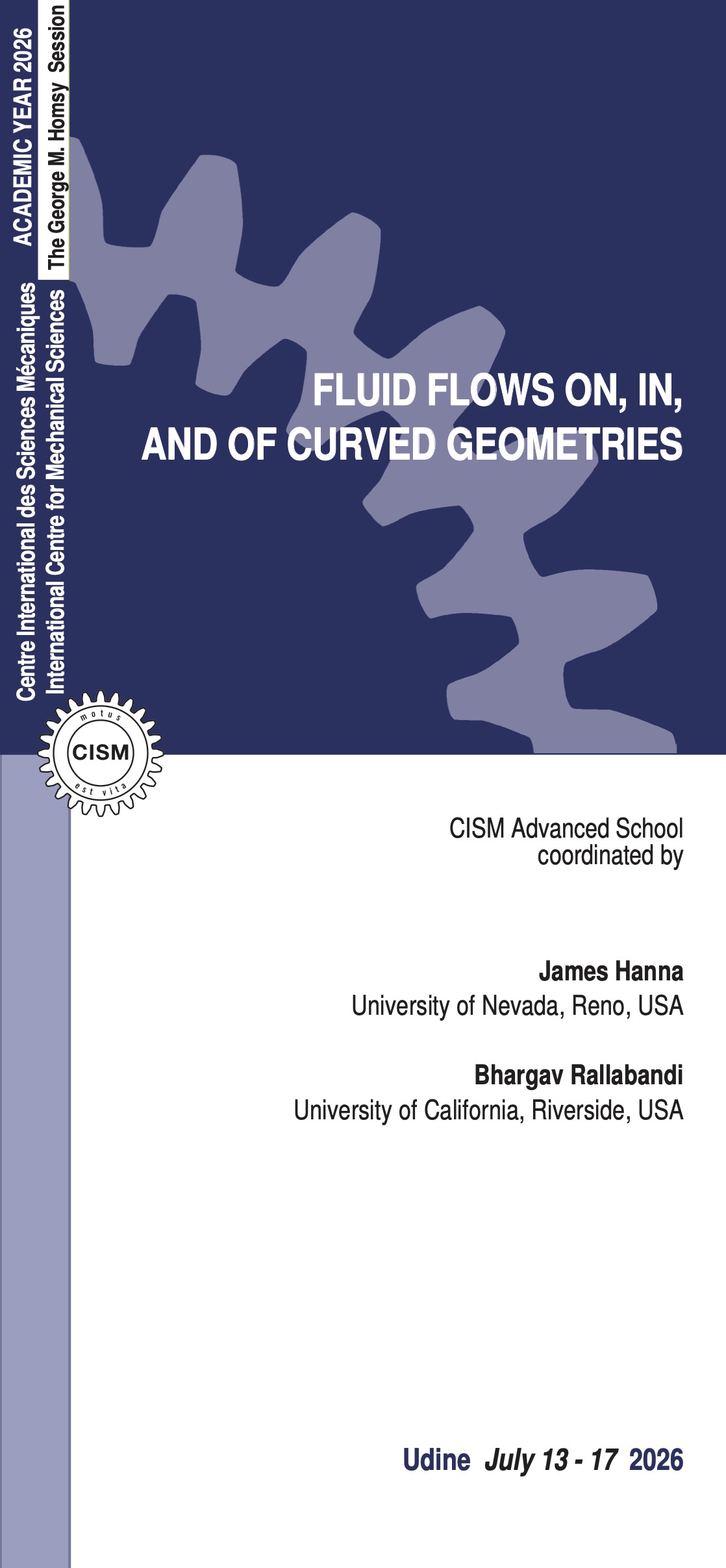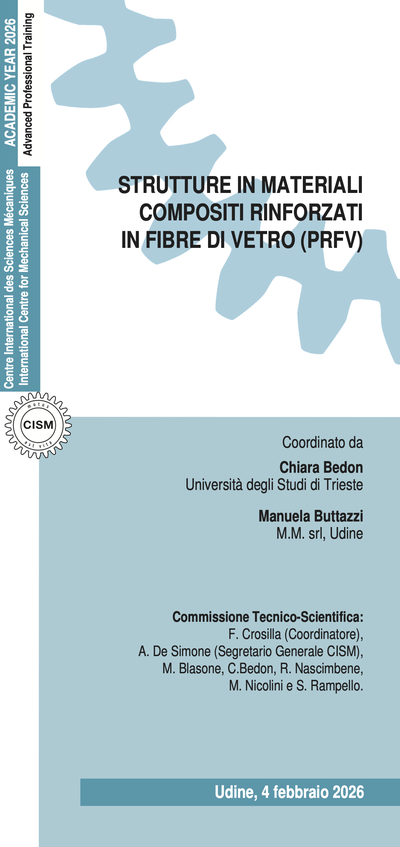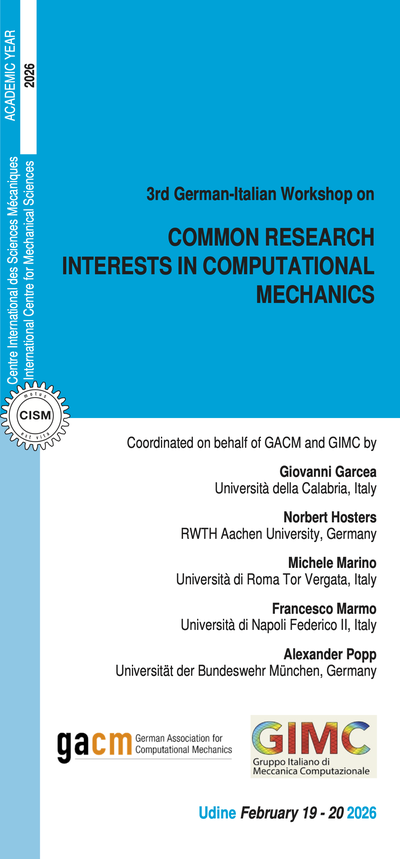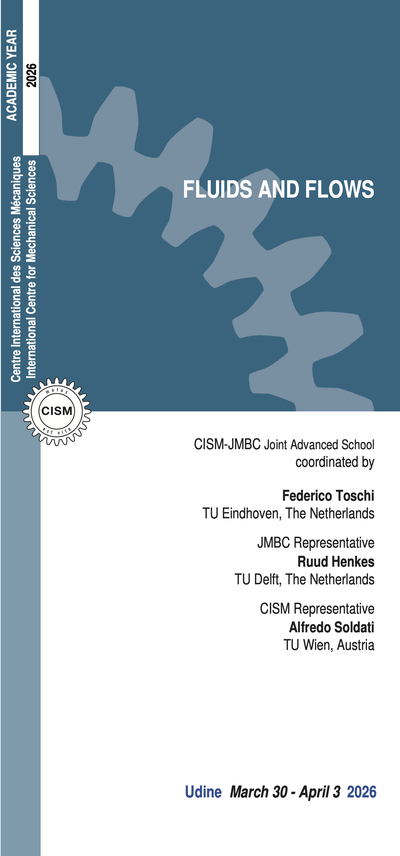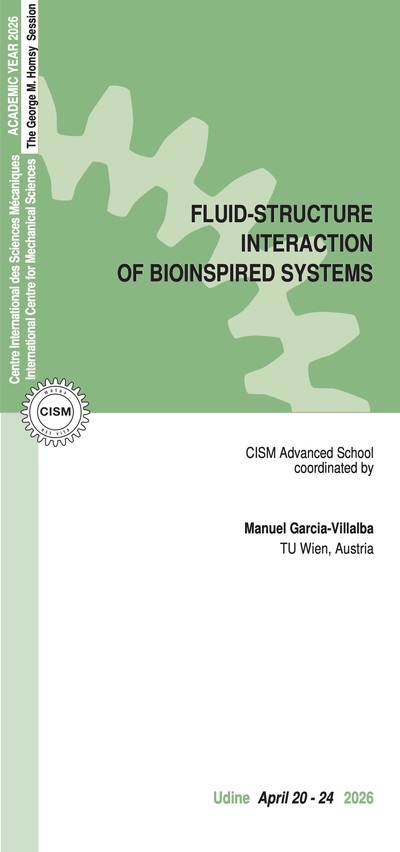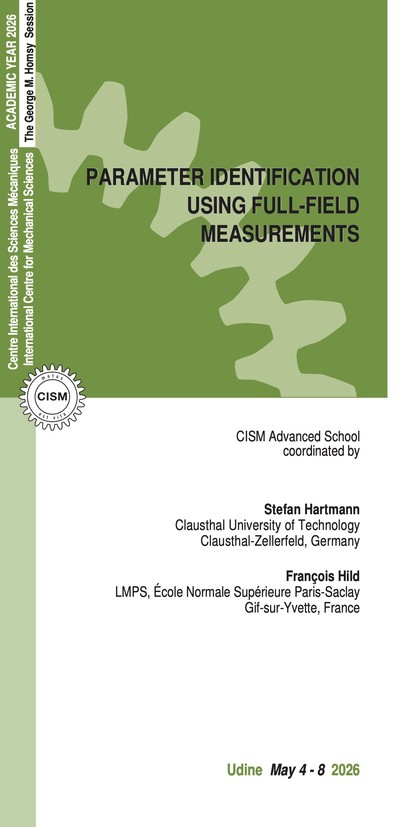The last decade has seen significant progress in the integration and application of fluid mechanical principles in many domains. Examples include geophysical, industrial, biomimetic, and soft robotic applications. These new interdisciplinary efforts have underscored the need to study fluid flow of, within, or over complex geometric configurations. In these systems, different geometric scales may be present, in the form of global curvature, local fine-scale asperities, and gradients of these. Examples include gravity currents over complex topography, cleaning of rough surfaces, or spin coating of patterned objects. The shape of a substrate or channel can vary dynamically in response to mechanical pressure, deposition of sediment or suspended particles, or simply through the relative motion of curved surfaces. Natural and engineered surfaces have microscopic surface textures, which influence flow: Small surface asperities lead to large-scale coating defects, and surface textures strongly affect friction and adhesion between lubricated (wet) materials. Interfacial geometry plays an important role in the rheological response of multiphase mixtures. Flows with free surfaces often exhibit instabilities and entail dynamically evolving geometric features such as pinch-off singularities, leading to the generation of droplets and bubbles.
The course will introduce the rich phenomenology and fundamental tools to characterize, study, and model the geometry of evolving fluid flows, with applications to interdisciplinary topics of current research interest. Participants will be exposed to a range of approaches to analyze and model flows with, through, and over complex geometries, including systems where the geometry evolves dynamically with the flow. While the course will focus on theoretical ideas, connections will be made to experimental findings and applications in engineering, physics, and other fields. By the end of the course, students will possess the necessary knowledge of the phenomena, an understanding of the state of the field including the identification of open research questions, and a new set of tools to synthesize and recombine in order to address these questions.
The course will deliver a broad discussion of flow and geometry, and their applications in a wide range of interdisciplinary topics. It is intended for graduate students and postdoctoral researchers in physics, engineering (mechanical/chemical), mechanics, and applied mathematics. The course will also be of interest to faculty seeking to expand into new interdisciplinary research areas at the intersection of mechanics, geometry, and the applied sciences.
The team of lecturers consists of researchers working on varied aspects of the topics mentioned above. Each will deliver six hours of lectures. While lecturers will focus on specific areas aligned with their expertise, these areas will be thematically united, so that participants can appreciate connections between various ideas.
Aris, R. Vectors, Tensors, and the Basic Equations of Fluid Mechanics. Sections 7.22, 7.35, 7.52–7.57, 8.31–32; Chapters 9 and 10. Dover, 1989.
Flügge, W. Taensor Analysis and Continuum Mechanics. Chapters 1, 5, 8; Section 9.1. Springer, 1972.
Duprat, C., Stone, H. A. (Eds.) Fluid–Structure Interactions in Low-Reynolds-Number Flows. Chapter 2. Springer, 2016.
Rallabandi, B. Fluid-elastic interactions near contact at low-Reynolds number. Annual Review of Fluid Mechanics, 56, 2024.
Bonn, D., Eggers, J., Indekeu, J., Meunier, J., Rolley, E. Wetting and spreading. Reviews of Modern Physics, 81, 739–805 (2009).
Eggers, J., Fontelos, M. A. Singularities: Formation, Structure and Propagation. Cambridge University Press, Chapters 5 and 15 (2009).
Gallaire, F., Brun, P.-T. Fluid dynamic instabilities: Theory and application to pattern formation in complex media. Philosophical Transactions of the Royal Society A, 375, 20160136 (2017).
Charru, F. Hydrodynamic Instabilities. Translated by P. de Forcrand-Millard, Cambridge University Press, Chapters 2 and 3 (2011).
6 lectures on:
Fluid dynamics around pinned and moving contact lines. Viscous flows in corners. Moving contact line singularity for a spreading drop; the Voinov solution. Regularization and matched asymptotics. Dynamics of a thin film with a pinned contact line. Alternative regularizations: piezoviscosity and phase fields.
6 lectures on:
Interfacial instabilities in thin liquid films. Rayleigh-Taylor instabilities, including the effect of inclination and curvature. Kapitza instabilities. Effects of non-uniform films due to rain or condensation.
6 lectures on:
Differential geometry of surfaces. Kinematics of surface evolution. Surface energy and tension. Dimensional reduction. Application to thin film flows.
6 lectures on:
Viscously dominated flows involving suspended particles. Effects of shape – spheres, rods and filaments. Interactions between particles close to contact. Soft and rough particles.
6 lectures on:
Mass transfer phenomena in bubbles and drops. Henry’s law and the Epstein-Plesset equation for bubbles. Diffusion-driven droplet evaporation, including collective, transient and rheological effects. Applications in carbonated beverages, geology, airborne disease transmission, and electrowetting.
ADMISSION AND ACCOMMODATION
The course is offered in a hybrid format, allowing participants the flexibility to attend either in person or remotely via the Microsoft Teams platform.
Admission to on-site attendance is granted on a first-come, first-served basis to comply with the capacity of the lecture room.
Registration fees:
- Early Bird On-Site Participation: € 650.00 + VAT* - Deadline: May 13, 2026
- Late On-Site Participation: € 800.00 + VAT* - Deadline: July 1, 2026
- Live Streaming Online Participation: € 250.00 + VAT* - Deadline: July 1, 2026
On-site participation includes a complimentary bag, five fixed menu buffet lunches, hot beverages, downloadable lecture notes.
Online participation includes downloadable lecture notes.
Application forms should be submitted online through the website: http://www.cism.it. A confirmation message will be sent to participants whose applications are accepted.
Upon request, and subject to availability, a limited number of on-site participants can be accommodated at the CISM Guest House for € 35 per person per night. To request accommodation, please contact foresteria@cism.it.
CANCELLATION POLICY
Applicants may cancel their registration and receive a full refund by notifying the CISM Secretariat in writing (via email) no later than:
- May 13, 2026, for early bird on-site participation;
- June 13, 2026, for late on-site participation;
- July 1, 2026, for online participation.
No refunds after the deadlines. Cancellation requests received before these deadlines and incorrect payments will be subject to a € 50.00 handling fee.
GRANTS
A limited number of participants from universities and research centers who do not receive support from their institutions can request a waiver of the registration fee and/or free lodging.
Requests should be submitted by email to the CISM Secretariat at info@cism.it by May 13, 2026. Submissions must include the applicant’s curriculum vitae and a letter of recommendation from the head of the department or a supervisor, confirming that the institute is unable to provide funding. Preference will be given to applicants from countries that sponsor CISM.
